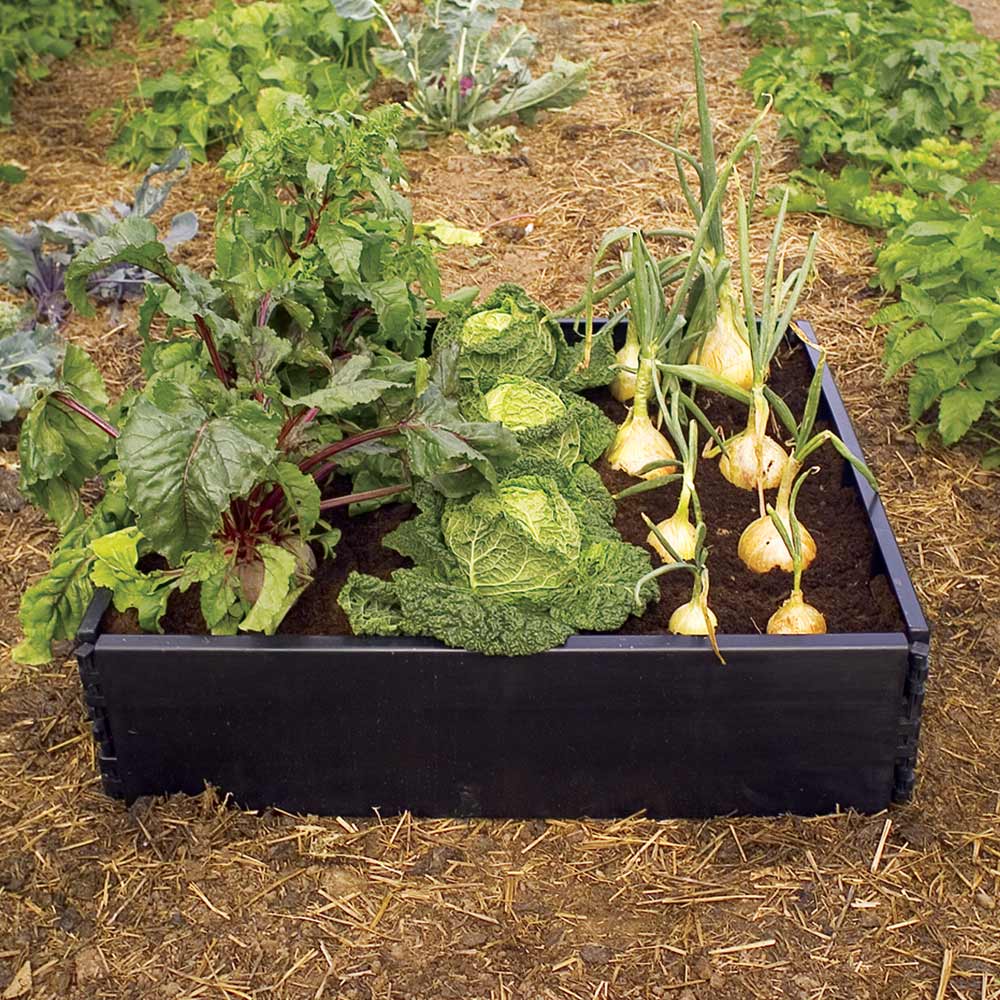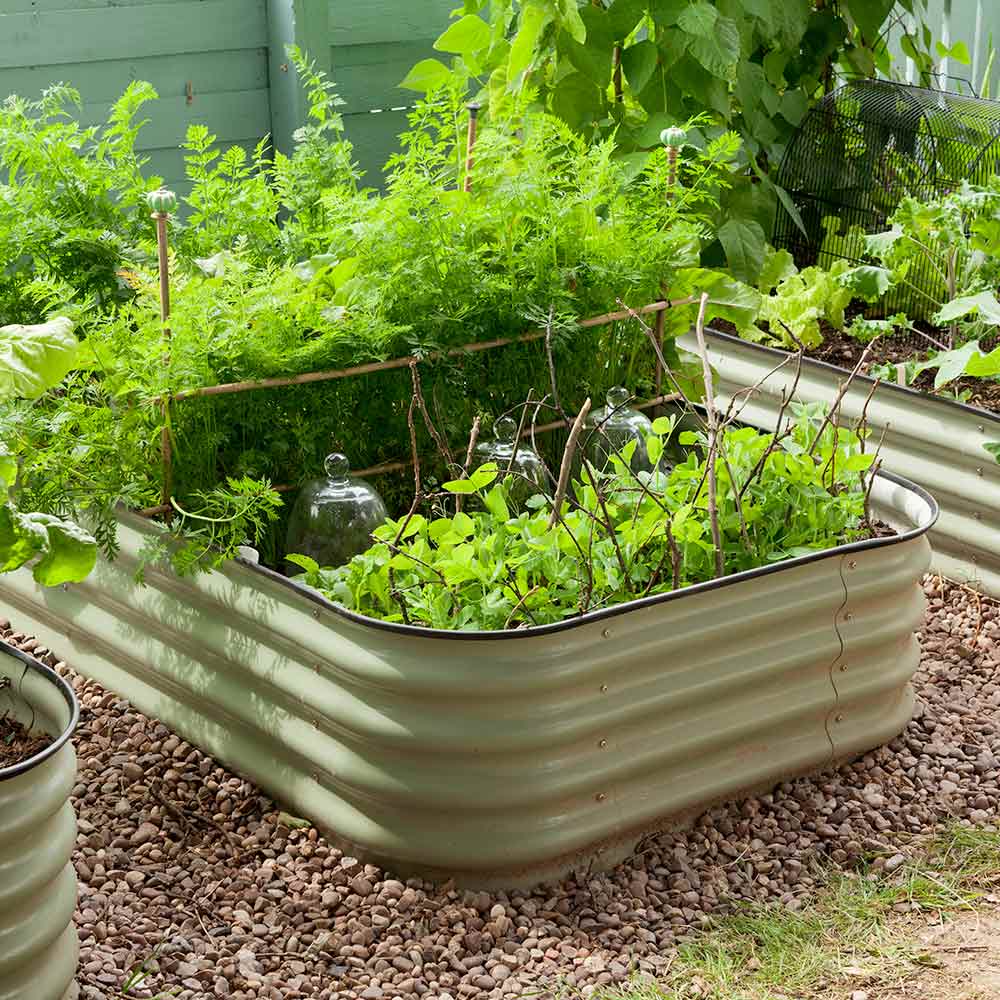Suttons Raised Beds: The Ultimate Guide To Growing Vegetables
Introduction
Raised beds are a great way to grow vegetables, flowers, and herbs. They offer a number of advantages over traditional in-ground gardening, including:
- Improved drainage
- Increased soil warmth
- Reduced soil compaction
- Easier access for people with limited mobility
- Greater control over the soil composition
- Increased yields
If you're thinking about starting a raised bed garden, Suttons is a great place to start. They offer a wide variety of raised bed kits and materials, so you can find the perfect solution for your needs.
In this blog post, we will discuss the benefits of using Suttons raised beds, as well as provide step-by-step instructions on how to build your own. We will also share some tips for growing vegetables in raised beds, so you can get the most out of your garden.
Benefits of Using Suttons Raised Beds
Suttons raised beds are made from high-quality materials that will last for years to come. They are also easy to assemble and maintain. Here are some of the benefits of using Suttons raised beds:
- Durable materials: Suttons raised beds are made from materials that are resistant to rot, decay, and pests. This means that you can enjoy your garden for years to come without having to worry about the beds falling apart.
- Easy to assemble: Suttons raised beds are easy to assemble, even for beginners. The kits come with all of the necessary materials and instructions, so you can have your bed up and running in no time.
- Low maintenance: Suttons raised beds require very little maintenance. You will need to add compost and mulch each year, but that's about it.
- Versatile: Suttons raised beds can be used to grow a variety of vegetables, flowers, and herbs. They are also a great option for people with limited mobility, as they make it easy to reach plants without having to bend or stoop.
- Affordable: Suttons raised beds are a great value for the price. They are more affordable than many other brands, and they offer the same high quality.
How to Build Your Own Suttons Raised Bed
If you're looking for a more affordable option, you can build your own Suttons raised bed. Here are the steps involved:
- Choose the right location. Raised beds should be located in full sun and well-drained soil.
- Measure and mark the area where you want to build your bed.
- Excavate the area to a depth of at least 6 inches.
- Add a layer of compost or manure to the bottom of the bed.
- Place the raised bed frame in the excavated area.
- Fill the bed with high-quality potting soil.
- Plant your vegetables, flowers, or herbs.
Tips for Growing Vegetables in Raised Beds
When growing vegetables in raised beds, there are a few things you can do to ensure success:
- Choose the right vegetables. Some vegetables, such as tomatoes, peppers, and cucumbers, do better in raised beds than others.
- Plant the right way. Make sure to plant your vegetables at the correct depth and spacing.
- Water regularly. Raised beds dry out more quickly than in-ground gardens, so it's important to water your plants regularly.
- Fertilize regularly. Raised beds need to be fertilized more often than in-ground gardens.
- Protect your plants from pests and diseases. Raised beds can be more susceptible to pests and diseases than in-ground gardens. Take steps to protect your plants, such as using row covers and insecticidal soap.
Conclusion
Suttons raised beds are a great way to grow vegetables, flowers, and herbs. They offer a number of advantages over traditional in-ground gardening, and they are relatively easy to build or purchase. If you're looking for a way to improve your garden's productivity and make it easier to care for, Suttons raised beds are a great option.
Are you looking for a way to improve your gardening? If so, you should consider using a raised bed. Raised beds offer a number of advantages over traditional gardening methods, including:
- They improve drainage and aeration, which can lead to healthier plants.
- They make gardening easier on your back and knees.
- They can help to extend your growing season.
- They can be customized to fit your specific needs.
If you're interested in learning more about raised beds, I recommend visiting Home Gardening. Home Gardening is a leading supplier of Suttons raised beds, and they have a wide variety of products to choose from. They also offer a wealth of information about raised bed gardening, including tips on how to build your own bed, how to choose the right plants, and how to care for your plants.
FAQ of suttons raised beds
- What are the benefits of using Suttons raised beds?
There are many benefits to using Suttons raised beds. For one, they can help improve drainage and aeration in the soil, which can lead to healthier plants. Raised beds can also help to extend the growing season, as they warm up more quickly in the spring and cool down more slowly in the fall. Additionally, raised beds can make gardening easier on your back, as you won't have to bend over as much to reach your plants.
- What size should I make my Suttons raised bed?
The size of your Suttons raised bed will depend on a number of factors, including the amount of space you have available, the types of plants you want to grow, and your own personal preferences. However, a good rule of thumb is to make your bed at least 3 feet wide and 6 feet long. This will give you enough room to plant a variety of vegetables and herbs, and it will also make it easier to reach the middle of the bed without having to step inside.
- What type of material should I use to build my Suttons raised bed?
There are a number of different materials that you can use to build your Suttons raised bed, including wood, concrete, and bricks. The best material for you will depend on your budget, the climate you live in, and your personal preferences. Wood is a relatively inexpensive material that is easy to work with, but it can rot over time if it is not properly treated. Concrete is a more durable material that will last for many years, but it can be more difficult to work with and more expensive. Bricks are also a durable material, but they can be more expensive than wood or concrete.
- What type of soil should I use in my Suttons raised bed?
The best soil for your Suttons raised bed is a loose, well-draining mix that is high in organic matter. You can buy pre-made potting soil or mix your own. If you are mixing your own soil, a good recipe is to combine 3 parts compost, 2 parts topsoil, and 1 part sand.
- How often do I need to water my Suttons raised bed?
The frequency of watering your Suttons raised bed will depend on a number of factors, including the climate you live in, the type of plants you are growing, and the size of your bed. However, as a general rule of thumb, you should water your bed deeply once a week. If the weather is hot and dry, you may need to water more often.
- How do I control pests and diseases in my Suttons raised bed?
The best way to control pests and diseases in your Suttons raised bed is to practice good garden hygiene. This means removing weeds regularly, watering your plants at the base, and rotating your crops from year to year. If you do see signs of pests or diseases, you can treat them with natural remedies, such as insecticidal soap or neem oil.
Image of suttons raised beds
10 different images of Suttons raised beds that are free to use:
- Suttons Raised Bed Kit - This kit includes everything you need to build a raised bed, including the lumber, hardware, and instructions. The bed is 4 feet wide by 8 feet long and 18 inches high.

- Suttons Raised Bed Planter - This planter is made from recycled plastic and is available in a variety of sizes. It is 18 inches high and comes in widths of 24 inches, 36 inches, and 48 inches.

- Suttons Raised Bed Edging - This edging is made from recycled plastic and is available in a variety of colors. It is 6 inches tall and comes in lengths of 10 feet, 16 feet, and 20 feet.

- Suttons Raised Bed Liner - This liner is made from heavy-duty plastic and is designed to protect your raised bed from weeds and pests. It is 6 mil thick and comes in widths of 24 inches, 36 inches, and 48 inches.

- Suttons Raised Bed Soil Conditioner - This soil conditioner is made from recycled wood chips and is designed to improve the drainage and aeration of your raised bed soil. It is 3 cubic feet per bag.

- Suttons Raised Bed Planting Mix - This planting mix is made from a blend of compost, peat moss, and perlite and is designed for use in raised beds. It is 3 cubic feet per bag.

- Suttons Raised Bed Fertilizer - This fertilizer is specially formulated for use in raised beds and is designed to provide your plants with the nutrients they need to grow healthy and strong. It is available in a variety of sizes.

- Suttons Raised Bed Tools - This set of tools includes a trowel, a cultivator, a hand rake, and a watering can. It is perfect for planting, cultivating, and watering your raised bed plants.

- Suttons Raised Bed Book - This book provides everything you need to know about building, planting, and maintaining a raised bed garden. It includes tips on choosing the right location, preparing the soil, selecting plants, and harvesting your crops.

- Suttons Raised Bed DVD - This DVD provides a visual guide to building, planting, and maintaining a raised bed garden. It includes step-by-step instructions and helpful tips.
Post a Comment for "Suttons Raised Beds: The Ultimate Guide To Growing Vegetables"